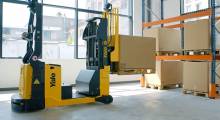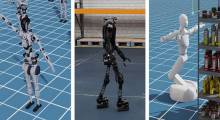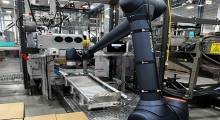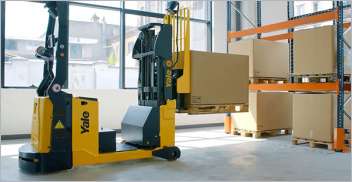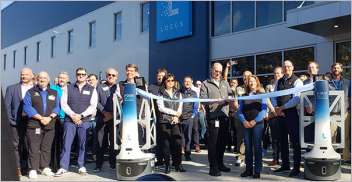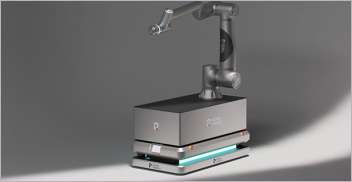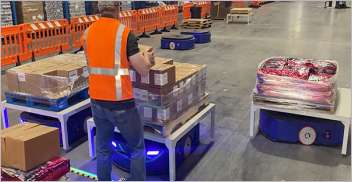Approximately 20,000 young people from around the world are projected to gather in St. Louis, Mo., 27-30 April, to participate in the 2016 FIRST (For Inspiration and Recognition of Science and Technology) Championship.
The annual championship—which celebrates excellence in science, technology, engineering and mathematics (STEM), innovative thinking and teamwork—culminates months of regional qualifying competitions involving K-12 students across 39 countries into a final, high-tech spectator experience.
The event features three separate robotics competition championships—the FIRST Robotics Competition Championship (grades 9-12); the FIRST Tech Challenge World Championship (grades 7-12); and the FIRST LEGO League World Festival (grades 4-8)—as well as the FIRST LEGO League Jr. World Festival Expo (grades K-3).
The showcase event is the FIRST Robotics Competition (FRC), where finalist teams enter industrial-sized robots they have designed, programmed and built in detailed, demanding contests against like-minded competitors. More than 80,000 high school students, ages 14-18, on more than 3,100 teams throughout the world participated in FRC events this year.
As strategic alliance partners of FIRST, the International Society of Automation (ISA) and its umbrella organization, the Automation Federation, actively support FIRST’s educational programs and mission, and encourage more young people to pursue careers that fully utilize their STEM skills and interests.
A select group of practicing automation professionals—volunteering on behalf of ISA—will be present at the ISA/Automation Federation exhibit (#702) to meet with FIRST competitors and their family members, and answer any questions they may have about career opportunities in automation and engineering.
“I invite all FIRST competitors to come by our exhibit and learn about the many rewarding, exciting and well-paying careers in automation and engineering,” said Steven Pflantz, an electrical and automation engineer and ISA and Automation Federation leader who has attended and supported all FIRST Championship events held in St. Louis. “You’ll find out what automation really is all about, what an automation professional really does, and discover the best educational and training paths to follow in order to become one. You’ll get direct insights—first hand, from working professionals in the field—about what automation jobs are really like. Who better to talk about these types of careers than the people who are actually in them?”
In simple terms, automation professionals create and apply technology to control and monitor the production of goods and services. Automation professionals are needed in virtually all areas of manufacturing and industrial innovation, including:
● Oil, wind, and solar power production
● Pharmaceutical and chemical manufacturing
● Food and beverage manufacturing
● Computer software and networking
● Industrial cybersecurity
● Government, military, and national defense
● NASA and space programs
● Automotive industry, including the racing industry
● Amusement parks, including roller coaster and ride design
The need for automation professionals far outpaces available supply; career options in industrial cybersecurity are particularly bright. For example, the manufacturing-sector in the US employs nearly 12 million people (the equivalent of 1 in 6 private sector jobs) and supports almost 5 million more jobs. However, 5% of manufacturing jobs remain unfilled due to a lack of skilled candidates. By one estimate, the US alone will need more than 120 million workers with advanced manufacturing skills by 2020. At the current pace, America will prepare less than half of that number.
“The good news for young people who are capable in STEM is that there are a lot of career options relating to automation,” Pflantz said. “These are well-paying careers that are very rewarding. They give young people the opportunity to invent, explore and create new ways of making our economy, our society, our world better.“
Unlike information technology (IT) cybersecurity that protects, for instance, credit card data from being stolen, industrial cybersecurity defends critical infrastructure—such as power plants, utilities, transportation networks, water and wastewater treatment facilities—from being damaged and disabled.
The industrial automation and control systems (IACS) that operate these plants and facilities are highly susceptible to cyberwarfare. A cyberattack can shut down and severely disrupt safe plant and facility operations, putting the environment and economy as well as lives in jeopardy.
Article topics
Email Sign Up




